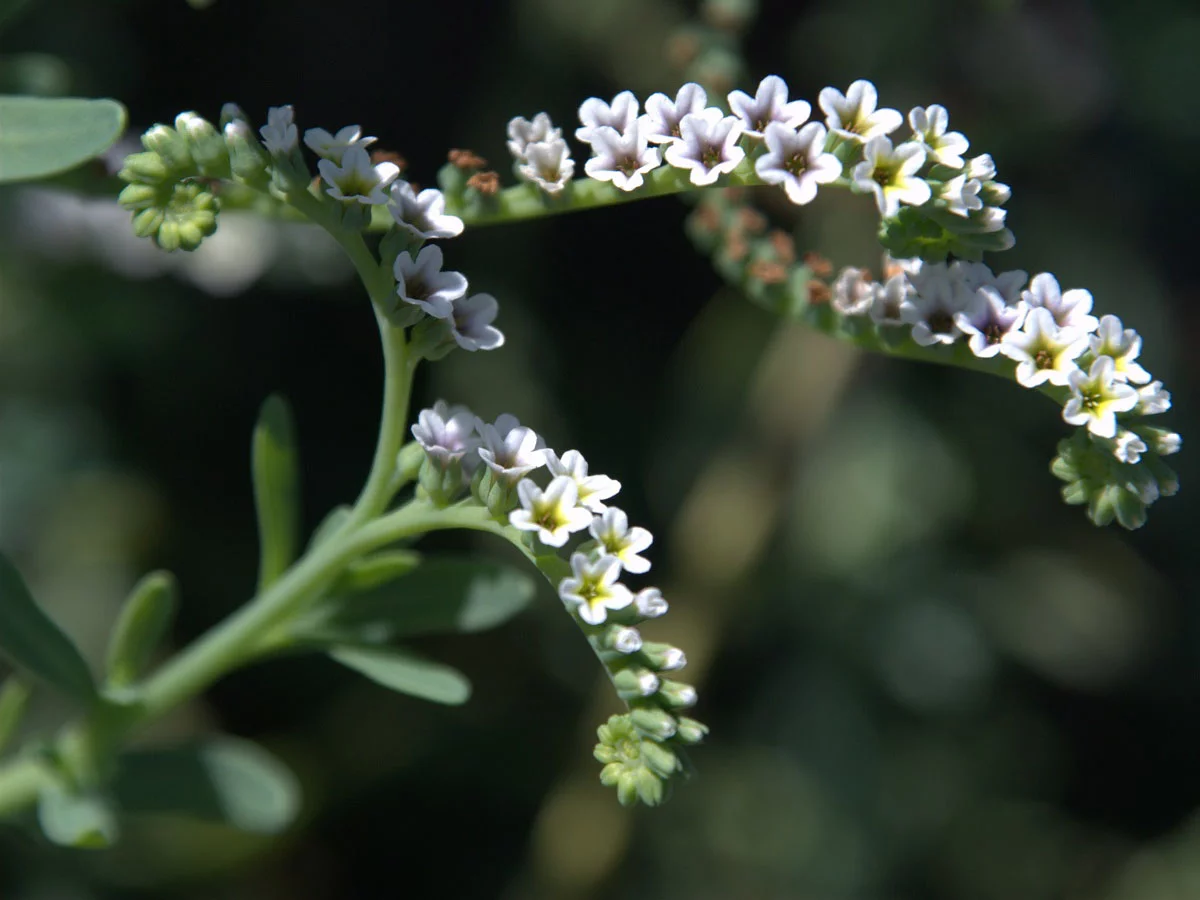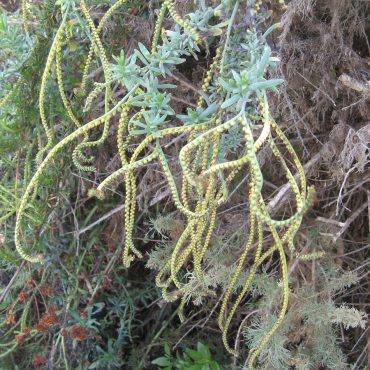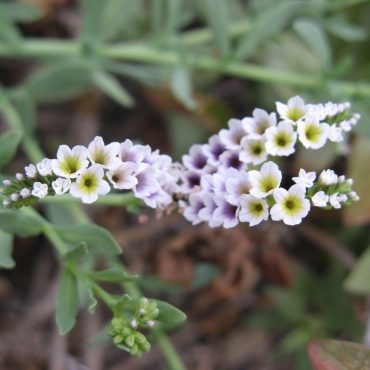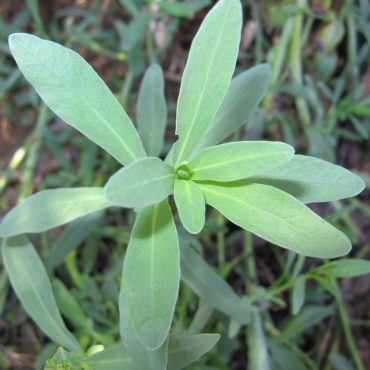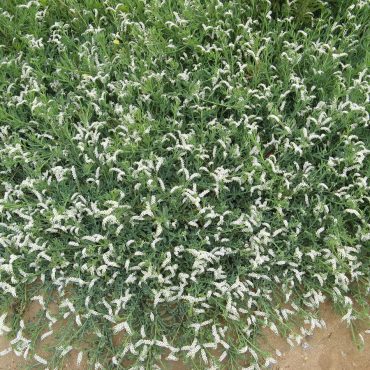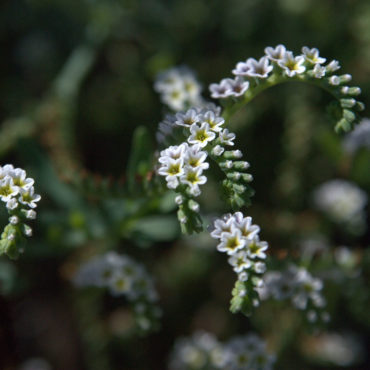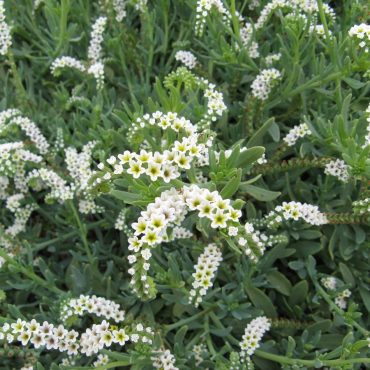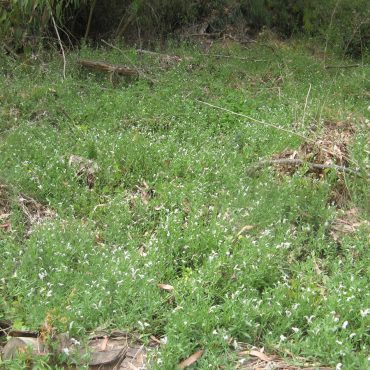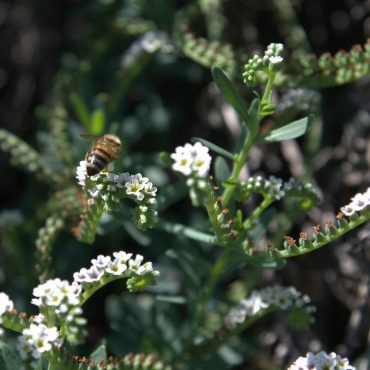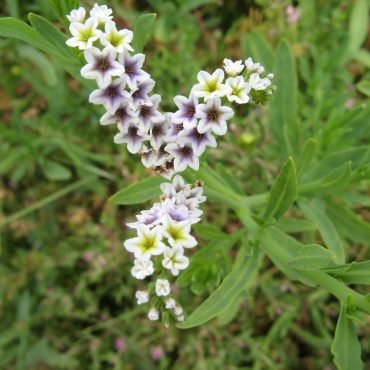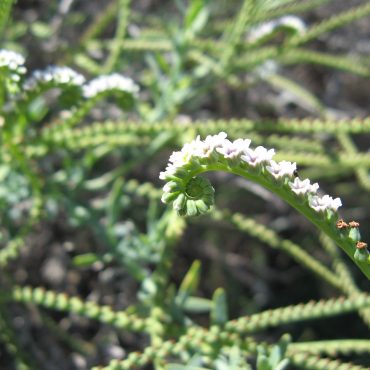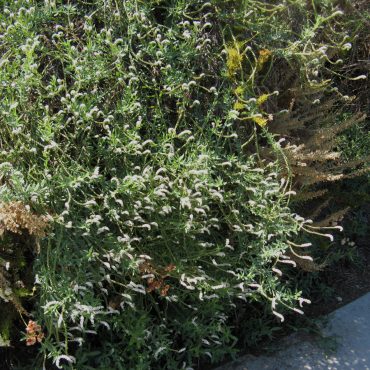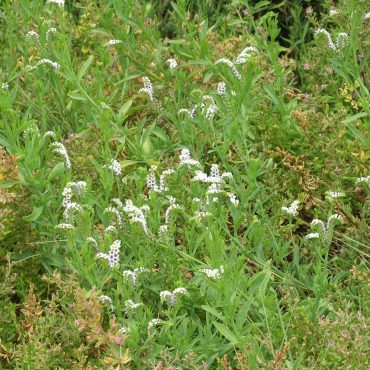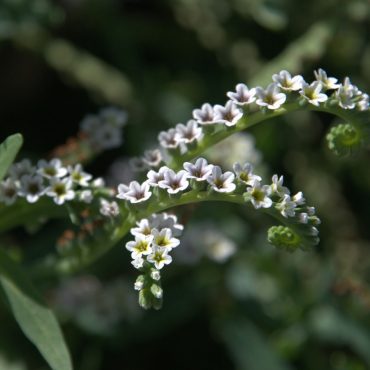Description
2,4,11,59
Salt heliotrope is a sprawling perennial herb that is usually less than a foot (30 cm) high but may occasionally work its way several feet up through neighboring shrubs. Leaves are bluish green and somewhat fleshy; they lack hairs but may be thinly covered with a whitish powder. Leaves are oval to oblanceolate, 1/4-1 1/2 inches (1-6 cm) long, with smooth margins.
Flowers are produced along a gradually uncoiling stalk (a “scorpioid cyme”); stalks are often paired, occasionally in threes. Flower buds develop in the center of the coil and new flowers appear in alternating rows along the outer part of the uncoiling stalk. Seedpods develop along the older, straightened stalk. At Torrey Pines, flower stalks are generally less than 4 inches long.1 However, at the San Elijo Lagoon Nature Center, one exuberant plant produced flower stalks more than 13 inches (35 cm) long, with seven blooming flowers, at least seven buds yet to open and evidence of 139 previous flowers.
Petals are united into a bell, about 1/4″ (0.6 cm) wide with five flaring lobes. Flowers are bisexual with five stamens and one green, mushroom-shaped pistil. In the Reserve, young flowers are white with greenish-yellow throats; throats turn purple as the flowers age. The primary bloom period extends through spring and summer, usually March – October.1
Each flower produces a fruit that separates into 0-4 nutlets. However seed set is low and rarely does a flower produce all four nutlets. Reproduction is more often by shoots arising from the wide-spreading roots than by seeds.

